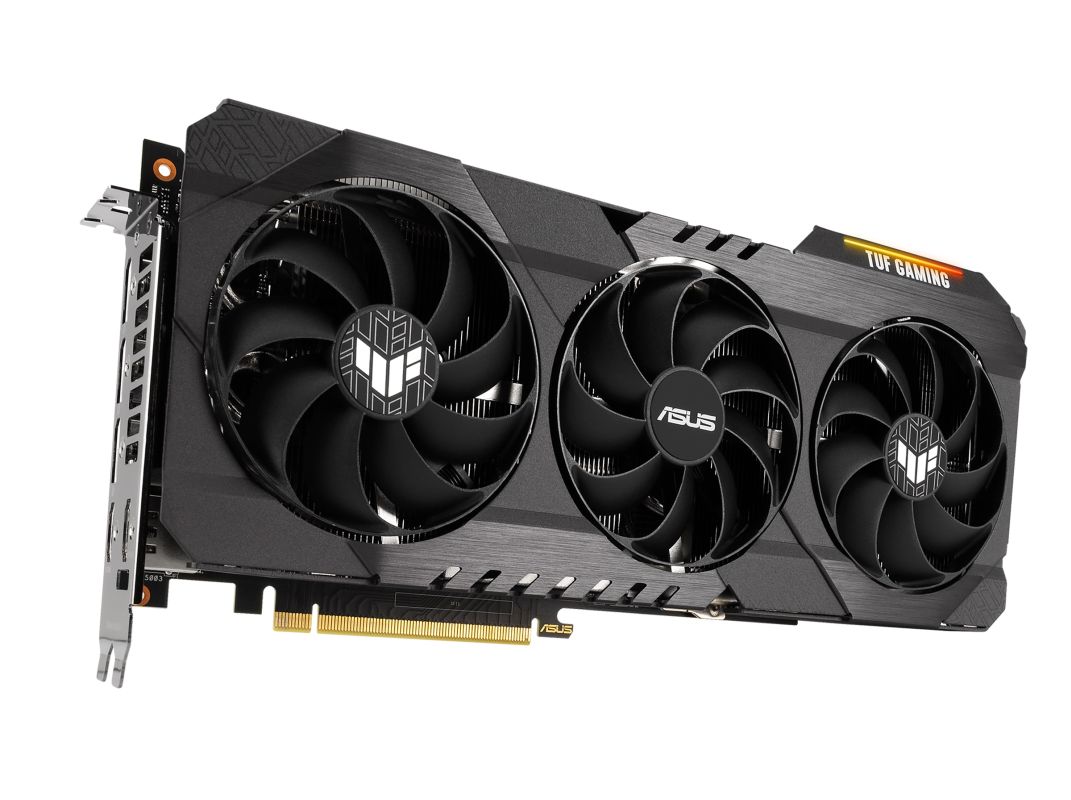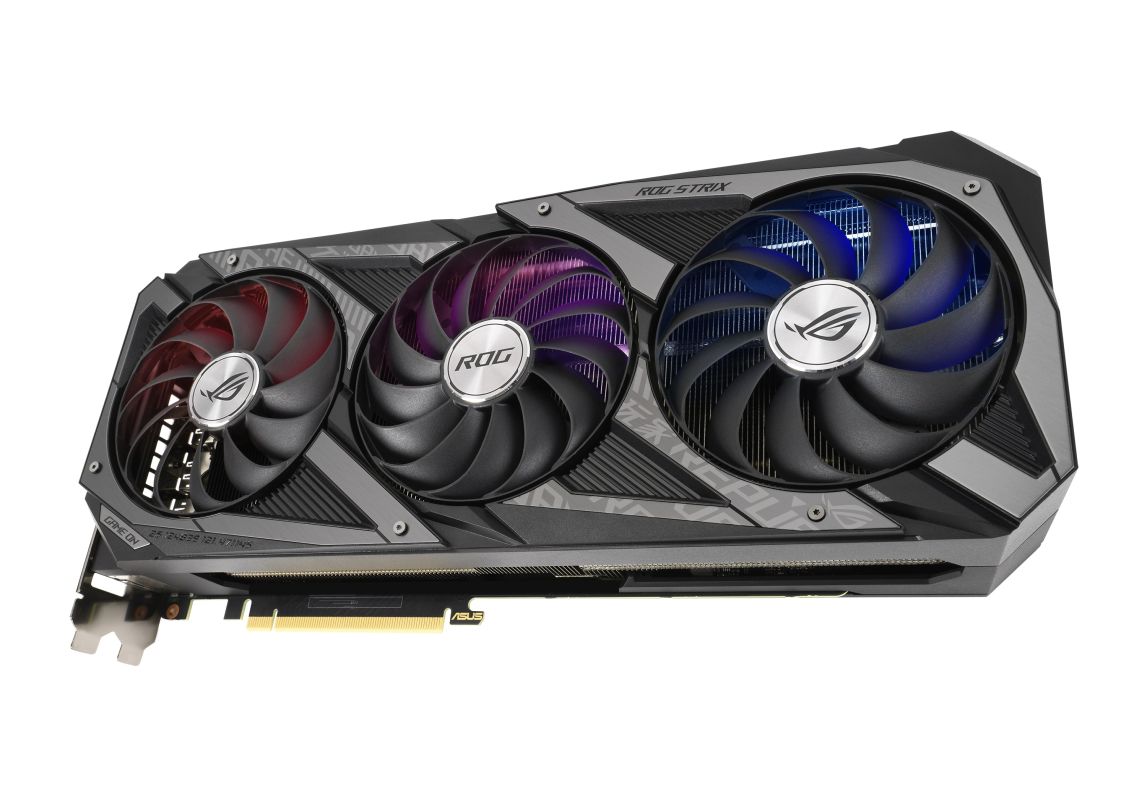ASUS’ RTX 3080 Ti offerings can basically be broken down into three lineups: TUF Gaming, ROG Strix, and ROG Strix LC. Within each of the lineups, the card is further broken down into two variations: an OC edition and a Non-OC edition, the nomenclatures being self-explanatory.
For RTX 3080 Ti cards under the TUF Gaming series, gamers can expect the same militaristic, stealthy look, with angular cuts in its cooler shrouds, complete with a triple-fan cooling solution. In addition, the card simply has a single Aura RGB LED strip at the front of the card, making it perfect for the user who simply wants power but not the disco experience. Moving up the pyramid, the ROG Strix version of the RTX 3080 Ti doesn’t stray far from the current sub-brand’s current design language. Out of the box, the card still sports the same clean-cut, uniform design, while still retaining that same three-fan design and unique cutouts in its cooler shroud. Unlike the TUF Gaming series, the ROG Strix RTX 3080 Ti is loaded with more Aura RGB LEDs, which are customisable via ASUS’ Aura Sync.
Sitting at the top of ASUS’ product list is, of course, the ROG Strix LC RTX 3080 Ti. For the uninitiated, this “LC” acronym stands for Liquid Cooled and as the name suggest, this version of the RTX 3080 Ti has an AiO cooler fitted to the GPU. That cooler is attached to a large 240mm radiator via 600mm hoses at each end. On top of that, the card has a single blower-style fan attached at the end of the card, while the radiator itself comes with two 120mm fans with addressable RGB LED. Lastly, all versions of ASUS’ RTX 3080 Ti cards are already available and pricing for each variant are as listed below:
ASUS ROG Strix LC – RM9130ASUS ROG Strix LC OC Edition – RM9200ASUS ROG Strix – RM8520ASUS ROG Strix OC Edition – RM8640ASUS TUF Gaming – RM5680ASUS TUF Gaming OC Edition – RM7690
Regardless of SKUs, though, all RTX 3080 Ti variants come with 12GB GDDR6X graphics memory, 10240 CUDA cores, three DisplayPort 1.4a ports, two HDMI 2.1 ports, and access to PCIe 4.0.

